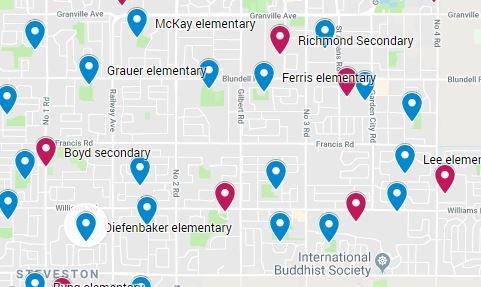Deja vu, anyone?
Prior to the last provincial election, the BC Liberals announced they would provide funding to upgrade Richmond’s schools to make them safe in case of an earthquake.
The announcement was welcome — albeit with a tone of “it’s about bloody time!” Richmond had, and still has, 35 schools considered to be at “high risk” in the case of a seismic event.
However, there was a catch.
Because some of our schools were considered “under capacity,” the school district would only get the money for upgrades if it brought its capacity rate up to 95 per cent. In other words, if it closed schools.
Closing schools is probably the toughest thing for a school board to do, and the idea of the government using child safety as a bargaining chip to make it happen had many furious.
The capacity requirement also led to pitched battles between school groups — although Kelly Greene, now a city councillor, along with others, formed Richmond Schools Stand United to help create a more unified voice.
Regardless, it was a painful 15-month process in which district staff did the math every which way. They eventually came up with a plan that ensured most students could walk to schools, but still numerous schools would have to be closed. Parents packed board meetings to let trustees know how they felt about that.
At the 11th hour, just months before the 2017 election, the ministry flipped and agreed to provide funding regardless of capacity. While some were skeptical about the timing, there was a sense of relief among many families.
So, here we are now, two years and a new government later, just what’s changed? Seismic upgrades have started on two schools and will begin on four more by the end of the year, which is great, but the upgrades versus capacity dilemma remains. Right now, there are schools in Richmond operating at less than 50 per cent, and that number’s expected to drop even further. Overall, the district has 5,000 empty seats, according to the district’s recently released Long Range Facilities Plan (LRFP) draft report. (See page 16) It doesn’t take an accountant to see a problem.
For sure, neighbourhood schools are vital to healthy communities and we should do everything to save them. At the same time, renovating a 40-year-old, seismically unsafe school that is only half full makes no sense.
This is not an easy process, but it is a process and that’s what could be different this time around. The fact the board doesn’t have a 95 per cent capacity requirement hanging over its head changes a lot.
Schools dodged a bullet last time, but this issue is not going away. We owe it to our kids to come up with a plan. It may involve hard decisions; it should involve creative solutions. But ultimately, I think most of us would rather see our resources go towards building safe schools that offer a range of programs than heating a half-empty building.



